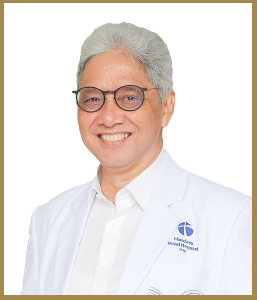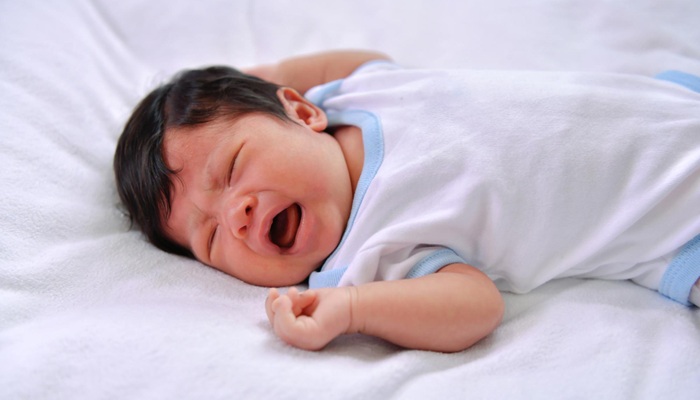Hirschsprung disease is a congenital condition in which nerve cells in a baby’s large intestine do not develop properly. These nerve cells are responsible for helping move bowel contents through the colon. Without them, stool can build up and cause obstruction, leading to difficulty passing stool.
Newborns with Hirschsprung disease often cannot have a bowel movement within the first few days after birth. In mild cases, symptoms may not appear until later in childhood, and in rare cases, the condition may only be diagnosed in adulthood. The main treatment for this condition is surgery to bypass or remove the affected part of the large intestine.
Contents
Symptoms of Hirschsprung Disease
Symptoms of Hirschsprung disease vary depending on severity. Signs usually appear soon after birth, though some may not develop until childhood or even adulthood.
The most common sign is the inability of a newborn to pass stool within the first 48 hours after birth.
Other symptoms in newborns may include:
- Constipation or excessive gas that makes the baby fussy
- Diarrhea
- Poor growth
- Abdominal pain
- Bloated or swollen abdomen
- Vomiting, including green or brown vomit
In older children, symptoms may include:
- Chronic or persistent constipation
- Abdominal bloating
- Difficulty gaining weight
- Fatigue
- Abdominal pain
- Enlarged abdomen
Causes of Hirschsprung Disease
The exact cause of Hirschsprung disease is not fully understood. In some cases, it runs in families, while in others, it is associated with genetic mutations.
Hirschsprung disease develops when nerve cells in the large intestine fail to mature properly. These nerves control muscle contractions that move food and waste through the digestive tract. Without them, stool remains in the colon and causes obstruction.
Risk Factors
Several factors may increase the risk of Hirschsprung disease, including:
- Having a sibling with Hirschsprung disease. The condition can be hereditary, so if one child is affected, siblings are also at risk.
- Male sex. Hirschsprung disease is more common in boys.
- Genetic conditions or other birth defects. Hirschsprung is sometimes linked with genetic syndromes such as Down syndrome, as well as congenital heart disease.
Children with Hirschsprung disease are at risk of developing enterocolitis, a severe intestinal infection that can be life-threatening and requires urgent medical care.
Treatment for Hirschsprung Disease
Hirschsprung disease is typically treated with surgery to bypass or remove the portion of the large intestine lacking nerve cells. The two most common surgical approaches are the pull-through procedure and ostomy surgery.
-
Pull-Through Surgery
In this procedure, the diseased section of the colon is removed. The healthy part of the intestine is then pulled down and connected to the anus. This technique is often performed using minimally invasive surgery through the anus without large incisions.
-
Ostomy Surgery
For children who are very ill, surgery is done in two stages. First, the affected part of the colon is removed. The healthy section is connected to an opening in the abdomen called a stoma. Stool exits through the stoma into a special external bag. This allows the remaining intestine time to heal.
After recovery, a second surgery is performed to close the stoma and reconnect the healthy intestine to the rectum or anus.
Post-Surgery Outcomes
Most children are able to pass stool normally through the anus after surgery. However, some complications may occur, which often improve with time, such as:
- Constipation
- Delayed toilet training
- Diarrhea
- Fecal leakage
Even after surgery, children remain at risk of developing enterocolitis, especially within the first year. Seek immediate medical attention if symptoms of enterocolitis appear, including:
- Rectal bleeding
- Diarrhea
- Fever
- Bloated or swollen abdomen
- Vomiting
Pediatric Surgeon at Mandaya Royal Hospital Puri for Hirschsprung Disease

Mandaya Royal Hospital Puri is home to one of Indonesia’s leading pediatric surgeons, dr. Sastiono, Sp.B Subsp.Ped(K). He is highly experienced in managing rare and complex pediatric surgical cases.
dr. Sastiono completed his medical and surgical training at the Faculty of Medicine, Universitas Indonesia (UI), including PPDS, PPDU, and Consultant Pediatric Surgery programs.
He is recognized as an expert in pediatric liver transplantation and has extensive expertise in hepatobiliary surgery, which includes procedures involving the liver, gallbladder, bile ducts, and pancreas.
In addition to Hirschsprung disease, dr. Sastiono is also experienced in treating:
- Biliary atresia (blocked bile ducts in infants)
- Anorectal malformations (imperforate anus)
- Pediatric hernia
- Appendicitis in children
- Intestinal obstruction in children
- Various pediatric liver conditions
Consultation Schedule with dr. Sastiono at Mandaya Royal Hospital Puri:
- Tuesday: 10:00 – 13:00 WIB
- Thursday: 10:00 – 13:00 WIB
If you wish to consult with Dr. Sastiono, you are welcome to visit Mandaya Royal Hospital Puri.
For your convenience, use the WhatsApp Chat, Book Appointment, or Care Dokter App (available on Google Play and App Store) to book visits, check queue numbers, and access complete hospital information.



